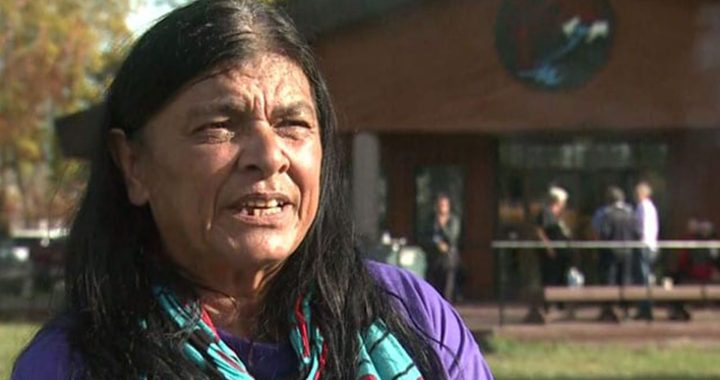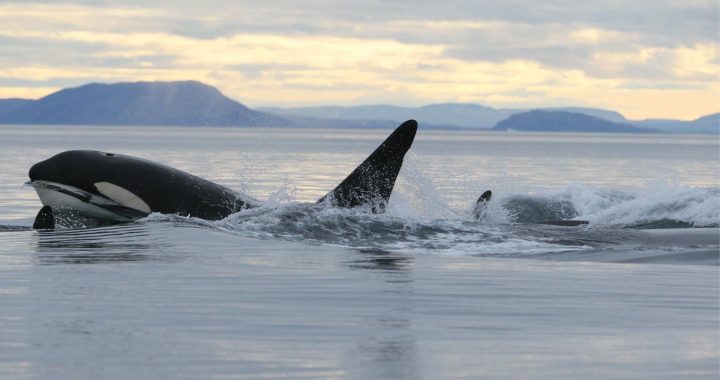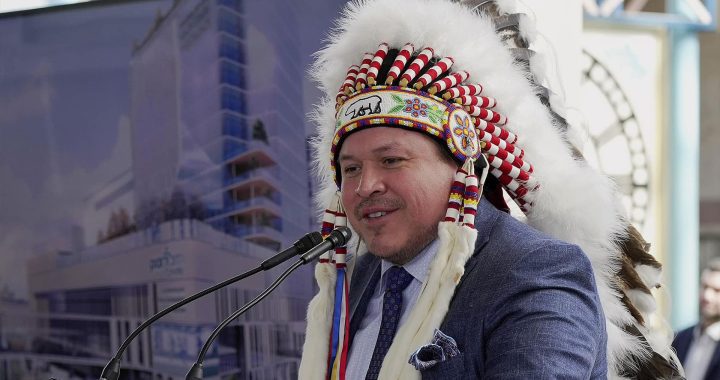Brandi Morin
APTN National News
The chief of the Papaschase band in Edmonton said it’s time Alberta looked into whether there are bodies buried at the former Charles Camsell Indian Hospital site.
“I’ve been looking into this for years,” said Chief Calvin Bruneau. “The province needs to investigate and do archaeological testing.”
The segregated hospital was set up in Edmonton in the late 1940s to treat First Nations, Metis and Inuit patients mainly as a sanatorium for tuberculosis (TB). Those infected with the deadly disease were brought in from
across the prairies and the NWT. Many times they never made it back home again.
Bruneau believes there’s a possible burial site of unmarked graves located on the southeast corner of the hospital property. And the province should split the costs with the federal government to pay for the costs of looking into it. Several of his band members and relatives were treated at the hospital.
“The governments should foot the bill and deal with it properly. There should be elders and spiritual people involved too. We need to look at the circumstances as to why people were buried there and provide answers to families. These could be their long lost relatives,” said Bruneau.
Over the years rumours have swirled about abuse, sterilization, experiments, and shock treatments that took place there.
“We do know that there was experiments going on at the hospital and people died under dubious circumstances, not just TB,” said Bruneau.
Two years ago Bruneau met with a representative from the Alberta Ministry of Culture and Tourism to talk about his concerns. He said they reviewed old newspaper clippings and other archival documents to look for evidence of burial sites at the hospital grounds. Nothing was found. But Bruneau thinks the burials were most likely undocumented.
A government official told APTN that the hospital had an agreement with the St. Albert’s residential school to use its graveyard. And the hospital site didn’t offer any evidence of graves.
This isn’t the first time Bruneau has dealt with finding of the remains of his ancestors.
In 2001, the city of Edmonton unearthed a burial ground of Papaschase descendants during a bridge reconstruction. The city and province worked with band members to establish a memorial in the area and to redirect construction of the bridge.
Bruneau has reached out to the new owners of the property, one of which is developer and architect Gene Dub who bought it from the province in 2004.
Dub and his partners bought the property for $3.6 million but ended up spending $5 million more after having to remove asbestos from inside the building. The original Indian hospital was torn down in the late ’60s and a new hospital was constructed on the property and made public until it deteriorated and closed in 1996.
Now it’s being turned into an apartment complex.
Since the 13 years of purchasing the property Dub has become acquainted with the history of the Indian hospital that once stood there.
“When we purchased the building we weren’t aware of the history, the provincial government just put it up as is…regarding the history I’ve certainly read a lot about it and am familiar with it now,” said Dub.
Dub said he hasn’t found any evidence of a graveyard on site, but is taking the necessary precautions just in case.
“We’ve sent a letter to the city that said we will stop working immediately if we come across a bone or something. If there was a place that people were buried it would be where the building is located now. We have informed any person working on the site that comes across any bones that might appear to be a grave to stop,” said Dub.
But the hospital site is rumoured to be one of the most haunted buildings in Alberta.
“I think most of that kind of haunting is not Aboriginal spiritual haunting- it’s public haunting. People are not even aware that this is not the building that Aboriginal’s were housed. Usually it’s kids breaking in. Most of the haunted rumours have nothing to do with Aboriginals, they’re just media hype,” said Dub.
But they did bring an Indigenous elder in to bless the four corners of the property- just in case.
“The idea was that there was some bad spirits in the building. That’s why we approached the chief to conduct ceremonies,” explained Dub.
Some patients who died were buried in a cemetery in the Enoch Cree Nation and Winterburn area west of Edmonton. Other bodies were taken to the Edmonton Indian Residential School 20 km northwest of the city.
George Muldoe remembers being asked to bury someone brought there from the hospital while attending residential school when he was just 11 years old in the 1950s.
“It was- we had no choice, we had to do it,” said Muldoe. “They’d give you a pick and a shovel and that was it.”
There is a memorial at the former school grounds recognizing a mass burial site. But Muldoe said there are more unmarked graves littered all over the area. The hospital used the school yard as its dumping grounds.
“There was never a preacher, nobody. No family. Just a truck would drop a body off right on the ground and leave,” said Muldoe.
Along with the abuses, he faced at residential school Muldoe said the experience with the graves have haunted him for over 30 years. When he swore an affidavit about his experiences during the residential school compensation process, he said his claims weren’t taken seriously.
“The church, Canada and some authors keep calling me a liar,” and he wasn’t the only one who dug graves and buried the dead there. Some of his old classmates had to do the deed as well, he said.
For many the hospital was a place of isolation and loneliness.
Dub said had he known the history of the property he would’ve never got involved with it.
“I think the government should’ve dealt with it. I think they should’ve done something with the project…that would help the Aboriginal cause. We’re scrambling just to keep ahead for us to- the government should’ve given the building to Aboriginals,” said Dub.
They are still awaiting additional financing and the final permit from the city to move ahead. Plans to dedicate a memorial in the northeast corner on an acre of the property recognizing the experiences of the Indian hospital are in the works.
But Bruneau wants to see more than a memorial. He wants answers.
Pamela Mayne Correia, curator in the department of Anthropology at the University of Alberta said there’s no miracle way of finding out if there are graves there other than to start digging.
“There is ground penetrating radar or you can dig down physically to find a grave,” she said, “You won’t know for sure unless you do that.”
With the findings of mass burial sites discovered at various residential school locations across the country that remained hidden for years after, Bruneau said the same atrocities probably happened at places like the Charles Camsell Indian Hospital.
“I would like to see it (grave) found and then figure out how to deal with it,” said Bruneau.
Restitution is needed, he continued, especially because both the federal and provincial governments are championing reconciliation and nation to nation building relationships.
“There has to be some kind of restitution,” he said.











I faintly remember my stay in this hospital as a young child. Being kept in the crib alongside 6-8 other children. I often think about them , Who were they? Where are they now? Did they make it/survive this desolate place.
I have history in the Charles Indian Hospital. My mother a Blackfoot woman spent 7 years there from age 17 to 21 years old. My father was there for 5 years. My father is Dene from NWT. This is where my parents meet. In the most horrible place on earth, but turned to a love story in the End.This place has special meaning to my family 8 siblings. I went there this pass fall for the first time ever. I put offerings there for all the patience & their families for PEACE !
It was not a place of health & wellness…it was hell!
I wish that building would burn for all the dirty secrets that happened in that Hospital…it was to be a place of Healing. ..it was hell!
if they went about this the right way,they could charge The Federal and Provincial for CULTURAL GENOCIDE :Cultural genocide is the systematic destruction of traditions, values, language, and other elements which make a one group of people distinct from other groups.